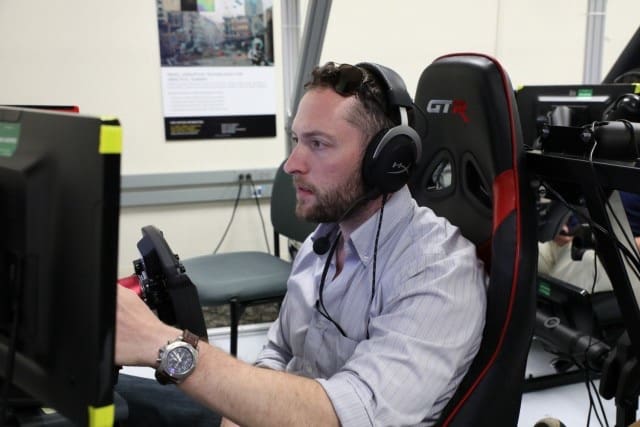ADELPHI, Md. — In recognition of National Robotics Week, U.S. Army researchers highlight some of their groundbreaking work aimed at advancing the future of human-machine integration for the battlefield.
The U.S. Army Combat Capabilities Development Command Army Research Laboratory, known as DEVCOM ARL, robotics research spans across ground and air autonomous systems, and energy systems, that support future mobility and maneuverability of these systems. ARL robotics researchers partner with industry, government and academia to help protect and support the Soldier.
One example of a recent ARL breakthrough is integrating generative artificial intelligence with robotics for battle damage assessment operations. ARL robots are now capable of understanding and responding to natural language, offering the Soldier human-like interactions.
“We are bridging the gap between humans and robots, making them more intuitive, responsive, and, ultimately, more useful for the Soldier,” said Phil Osteen, a lead researcher for the Artificial Intelligence for Maneuver and Mobility, or AIMM program. “ARL researchers have demonstrated an interactive bi-directional communication system that enables real-time exchanges between humans and robots.”
By interacting with Soldiers using natural language, robots can better communicate battlefield observations such as damage assessments and mission execution reports, enhancing battlefield operations.
The AIMM program is also focused on advancing autonomous off-road mobility, human-guided machine learning, and tactical behaviors that go beyond simple point-to-point movement. Army operations are complex, requiring considerations such as cover, concealment, mission considerations and formation controls, according to Udam Silva, AIMM program manager.
“We’ve made significant progress in off-road mobility,” Silva said. “We can now autonomously navigate through dense vegetation at operational speeds.”
ARL researchers also leverage external collaboration. In a research effort under AIMM, robotics researchers collaborate with an industry partner, Overland AI, on dual-use hardware and software solutions for ground autonomy, enabling vehicles to navigate challenging natural terrain autonomously at operationally relevant speeds.
In a separate ARL autonomous program, Human Autonomy Teaming, or HAT, is creating a cutting-edge toolkit of a suite of technologies that enable continuous mission planning, execution and review process between humans and autonomous systems, offering a more honest assessment. This iterative, or continuous assessment is a way of shortening that cycle, so Soldiers can determine when their autonomous systems deviate and why.
“This gives Soldiers the tools to correct robots’ behaviors using techniques such as human-guided machine learning developed by multiple ARL programs,” said Dr. Brandon Perelman, HAT program manager.
The HAT program is ensuring the U.S. Army’s software is continually refined to counter adversaries’ adaptations, according to Perelman.
According to Perelman, the software being developed is compatible with multiple interfaces, so mission plans can go into any equipped vehicle. It has a data synchronization and re-streaming package so different data streams can line up, while also looking at video feeds and positions, navigation and timing data from a robot for a fuller view of a complex situation such as encountered on the battlefield.
The HAT program informs future research aimed to expand vertically to higher, larger echelons in the Army chain of command as well as horizontally, across warfighting functions, to include multiple domains such as mount-dismount coordination, and ground-air teaming.
These examples represent some of ARL’s transformative robotics work that span multiple critical domains, designed to enhance military capabilities and ensure technological superiority.
Related link: Robotics Research Collaboration Campus (R2C2)
By U.S. Army DEVCOM Army Research Laboratory Public Affairs




